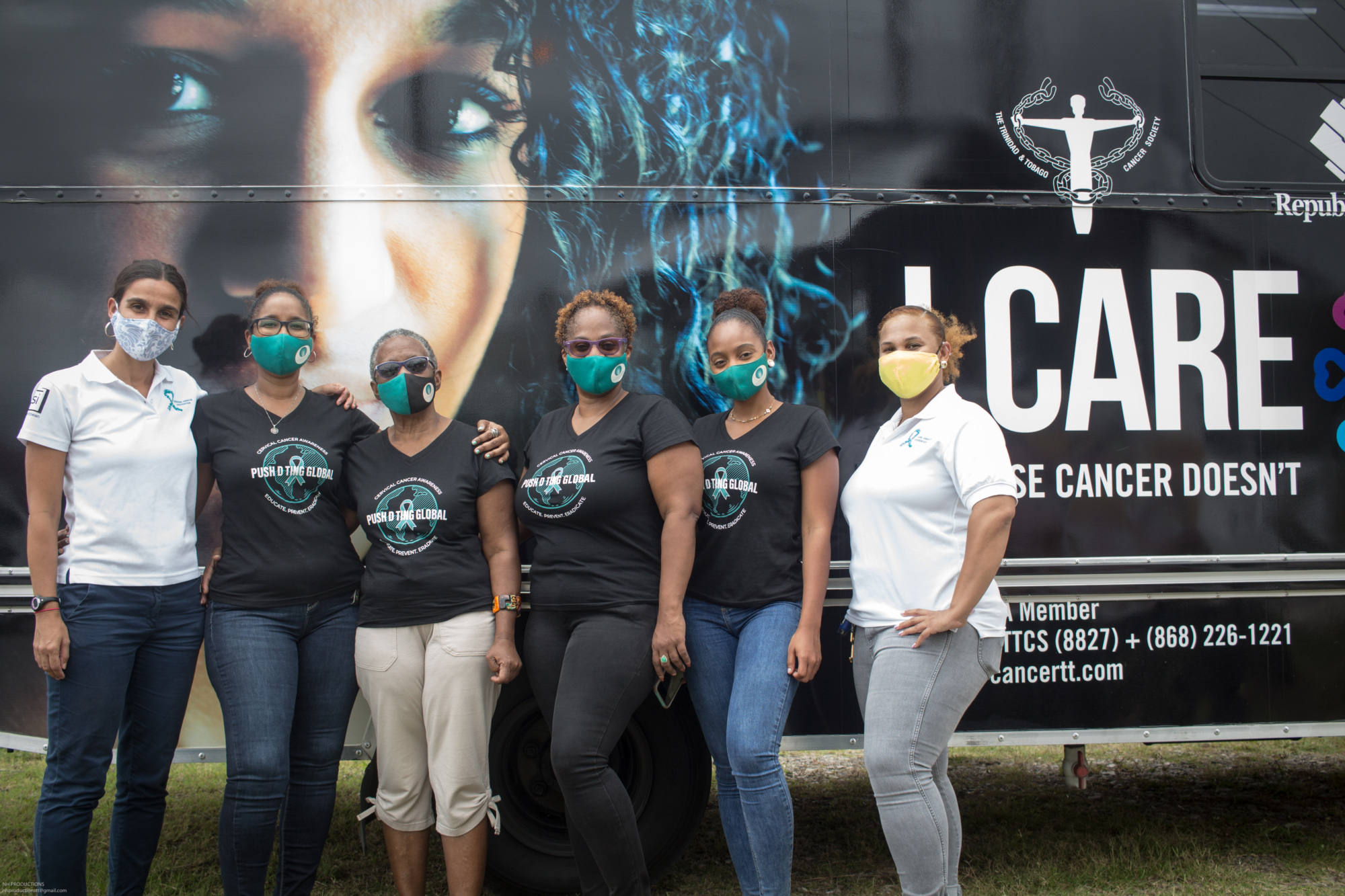I Am Generation Equality: International Women’s Day 2020
Julia Lourie and Kathy Vizas (a co-founder of TogetHER for Health) have supported PSI’s cervical cancer programming across several low- and middle-income countries, including Trinidad & Tobago and India, as members of the Maverick Collective.


Julia Lourie and Kathy Vizas (a co-founder of TogetHER for Health) have supported PSI’s cervical cancer programming across several low- and middle-income countries, including Trinidad & Tobago and India, as members of the Maverick Collective. These advocates and investors are leaders who believe strongly in the World Health Organization’s (WHO) inspiring message: cervical cancer can be eliminated. But gender equality is critical for achieving elimination, in particular for women in the developing world.
Why focus on cervical cancer for International Women’s Day?
Kathy Vizas: International Women’s Day is an opportunity both to celebrate women and their achievements, and to consider how we can all contribute to advancing gender equality. Gender inequalities contribute to health risks and poor health outcomes for women, in turn affecting women’s social and economic gains. For those reasons, I am committed to increasing women’s access to health care, including services to prevent cervical cancer, which kills an estimated 311,000 women annually around the world. That’s why I co-founded TogetHER for Health, which conducts advocacy, unites partners around common priorities, and raises awareness about cervical cancer among policymakers, funders, and women who need access to high-quality services.
Julia Lourie: Women are dying of this completely preventable disease. Today, 90% of cervical cancer cases occur among women in low- and middle-income countries, and these rates are rising. It is truly a disease of injustice as deaths are continuing to rise in the developing world. The vaccine against human papilloma virus (HPV), which causes cervical cancer, is an effective, low-cost solution for prevention, along with routine screening. We just need to make communities aware of these services and provide methods of easy access. We know what works; we just need the funding to finally close this gap.
Why have you chosen the prevention and treatment of cervical cancer to invest in?
Kathy: From 2013 to 2017, I made several trips to India and Myanmar with PSI. I met women who had been diagnosed with cervical cancer — women whose futures were in question, only because they had developed a disease that could have been prevented. If they had received the HPV vaccine to prevent cervical cancer, or screening for pre-cancerous lesions that can be treated, they could have avoided cervical cancer, but these services often aren’t available in low- and middle-income countries. I was galvanized to support organizations working to enable governments to scale up access to the services that prevent needless suffering and death from cervical cancer.
Julia: I believe we can see a cervical cancer-free generation within my lifetime – the solutions are all within reach. This year, the WHO will be launching its Cervical Cancer Elimination Agenda, which models how we might reach this goal by achieving national and regional targets for the vaccine, routine cervical screening, and access to treatment and care.
Given the WHO’s ambitious global targets, investing in cervical cancer programs now is critical to successful elimination. We need to rally support from private individuals, foundations, and corporations to help organizations like PSI reach these targets and save women and girls from dying from this preventable disease.
What has been the most exciting development in the health area that makes you hopeful?
Kathy: There are so many promising things happening in the field of cervical cancer prevention! For example, last year the World Health Organization released guidelines for treating precancerous cervical lesions with thermal ablation, which many health care providers find less burdensome than the alternative technique of cryotherapy. Thermal ablation will help providers reach more women to prevent cervical cancer. Another exciting development is digital imaging to support cervical screening, which not only assists providers in visualizing the cervix, but also enables image review by offsite experts, as well as machine-aided assessment of digital cervical images (Automated Visual Evaluation or AVE).
Julia: PSI is achieving remarkable impact around the world – to date, more than 1.4 million women have been screened and more than 24,000 women have been treated for pre-cancerous lesions. Misperceptions about the vaccine are being mitigated by effective behavior change communications campaigns, which we’ve seen in action through our project in Trinidad. Parents are learning about the importance of the vaccine alongside the supportive voices of community leaders and religious figures.
As the vaccine has also been added to the government’s vaccine schedule for youth in Trinidad, we believe we’ll begin to see an increase in uptake – preventing a generation of young people from developing this disease in the Caribbean.
What do you see changing in the health area over the next 10 years?
Kathy: Innovations like using artificial intelligence to detect cervical precancer will continue to evolve and improve over time, meaning more cases of cervical cancer will be averted. But in addition to improved tools to fight cervical cancer, I’m excited about the increasing attention to the global burden of the disease. This year, for example, the WHO will approve a strategy to eliminate cervical cancer as a global public health issue, as Julia mentioned. Imagine that: with enough political will and resources, we can eliminate a deadly form of cancer! In the next ten years, the world can move decisively and measurably down that path.
What can others do to support accomplishing the WHO’s Elimination agenda?
Kathy: The effective, low-cost approaches to achieve the WHO elimination strategy targets already exist, and new solutions are on the horizon. Our challenge is to put the solutions into the hands of providers such that every woman has access to them, and for that, more financial resources are needed. Funders should invest in cervical cancer prevention programs, and renew and increase commitments to Gavi and the Global Fund, to support access to HPV vaccination and cervical cancer screening and treatment. Governments in low- and middle-income countries should continue to expand HPV vaccine and screen-and-treat programs and develop budgeted national cancer control plans that incorporate cervical cancer prevention programs. Vaccine suppliers should increase investments in manufacturing capacity to ensure sufficient supply, and work with procurers to support fair pricing. And all of us can be advocates for those players to do their part.
Julia: We’re close – but still have so much work to do if we want to see a cervical cancer-free generation. It’s going to take new investors who are willing to support the work of organizations like PSI that are working to rapidly achieve these goals.
Currently, PSI is seeking funds to support countries that have innovative solutions to accelerate achievements in cervical cancer prevention globally. Funding will go toward:
- Supporting communication efforts for the rollout of HPV vaccine under the National Expanded Program on Immunization.
- Expanding integration of cervical cancer programming within our existing sexual and reproductive health (SRH) and HIV programs.
- Evaluating new ‘screen and treat’ technologies for health impact and scale, and sharing these learnings.
Originally posted on TogetHER for Health’s website.
